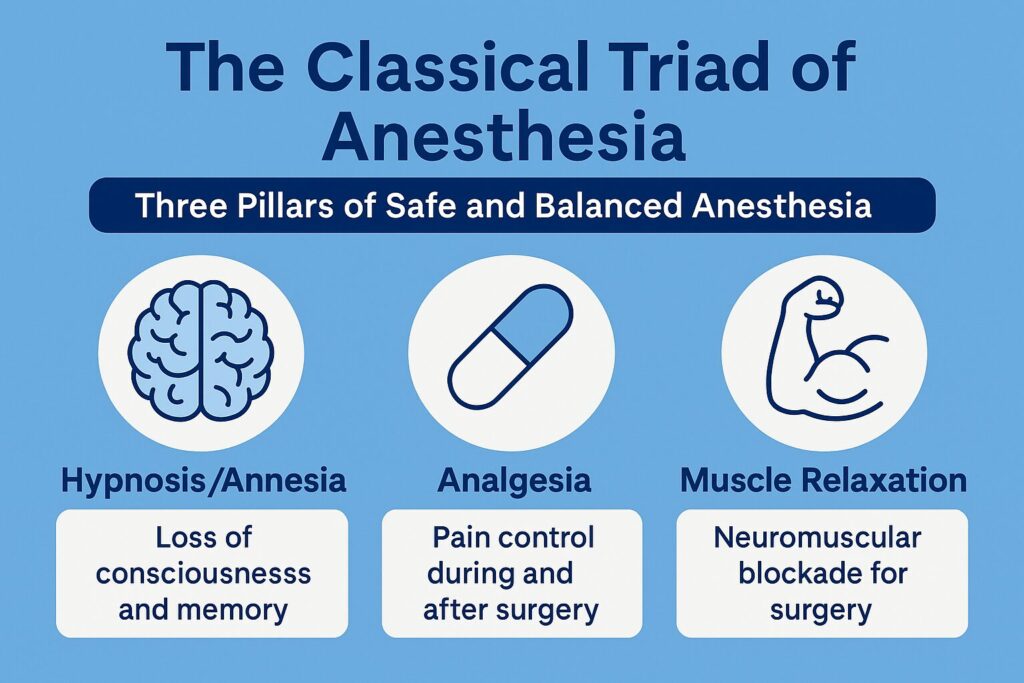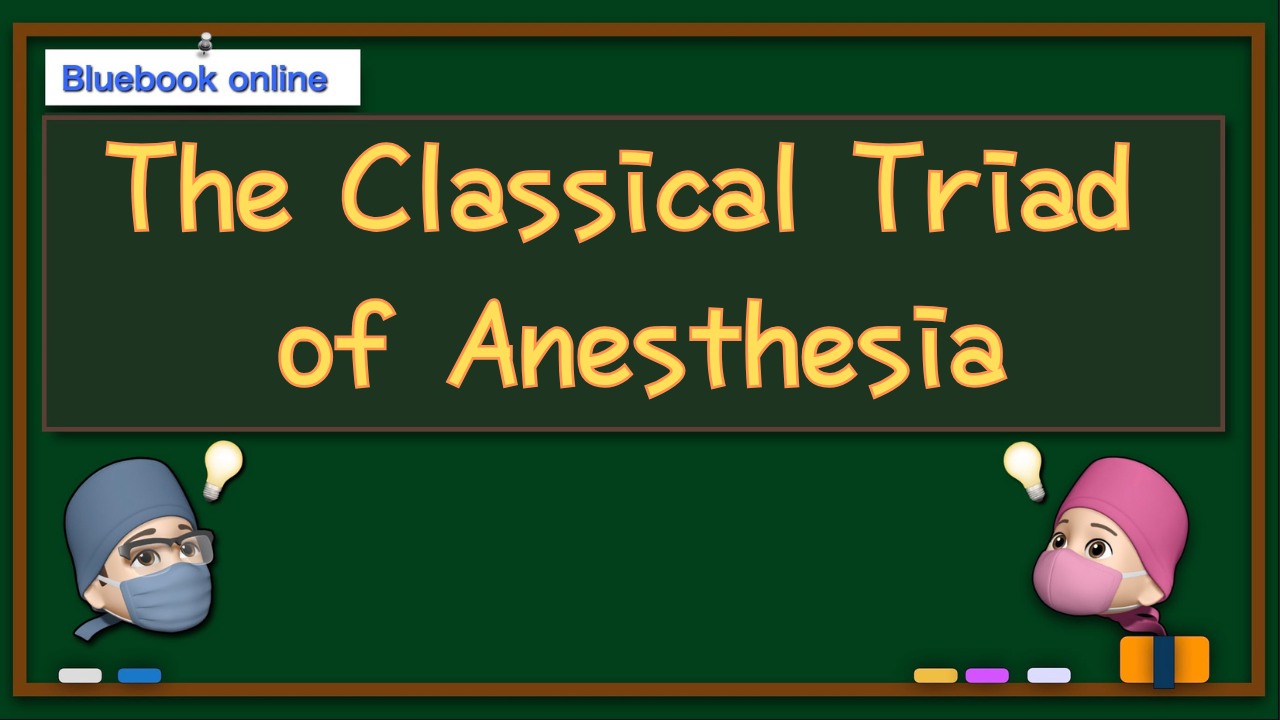👉👉 🇺🇸 All Posts 🇬🇧 / 🇯🇵 記事一覧 🇯🇵 👈👈
♦️ Introduction
You’re about to start anesthesia for a big abdominal case.
Pause for a second — have you covered all three pillars?
The classical triad of anesthesia is the foundation of every safe and well-balanced anesthetic plan. Let’s review the basics you’ll use every single day in the OR.
💡 The Three Essential Components

Think of anesthesia as a team effort between three key players:
Hypnosis, Analgesia, and Muscle Relaxation — each with its own job.
🔷 Hypnosis / Amnesia
Loss of consciousness and memory.
Achieved with agents like propofol, etomidate, or volatile anesthetics such as sevoflurane and desflurane.
🔷 Analgesia
Pain control during and after surgery.
Handled with opioids (like fentanyl or remifentanil) and regional anesthesia techniques.
🔷 Muscle Relaxation
Neuromuscular blockade for smooth intubation and ideal surgical conditions.
Agents like rocuronium or succinylcholine get the job done.
⚖️ Why Balanced Anesthesia Works
Modern anesthesia is all about balance — combining agents to target each component precisely.
This “balanced” approach reduces side effects while keeping your patient stable and comfortable.
Imagine a three-legged stool: if one leg is missing, the whole system wobbles.
💭 No analgesia? 👉 Expect hypertension and tachycardia.
💭 No relaxation? 👉 The surgeon won’t be happy.
🧠 Key Takeaway
The classical triad — hypnosis, analgesia, and muscle relaxation — forms the core of every safe anesthetic.
Mastering how they work together is what separates good anesthesia from great anesthesia.

コメントを投稿するにはログインしてください。